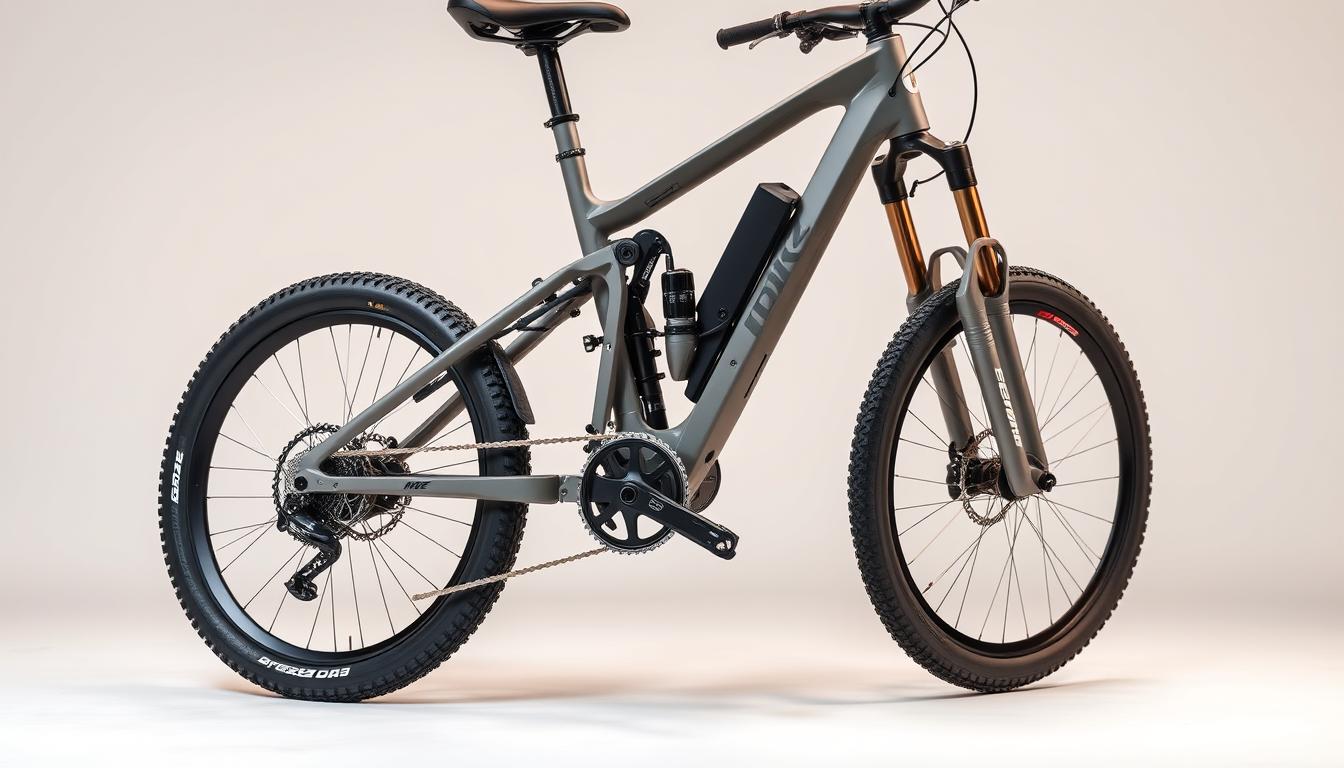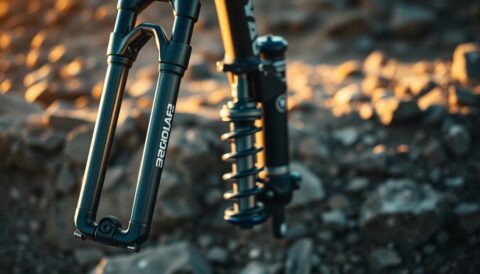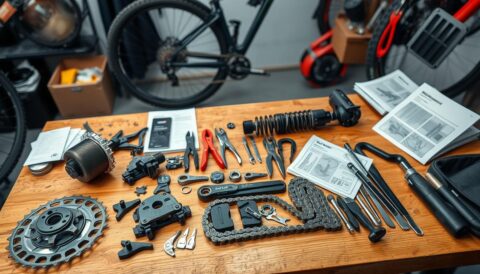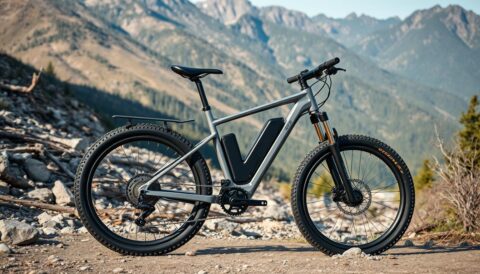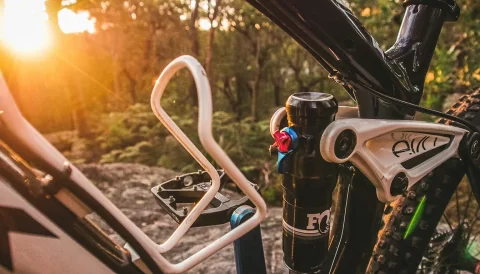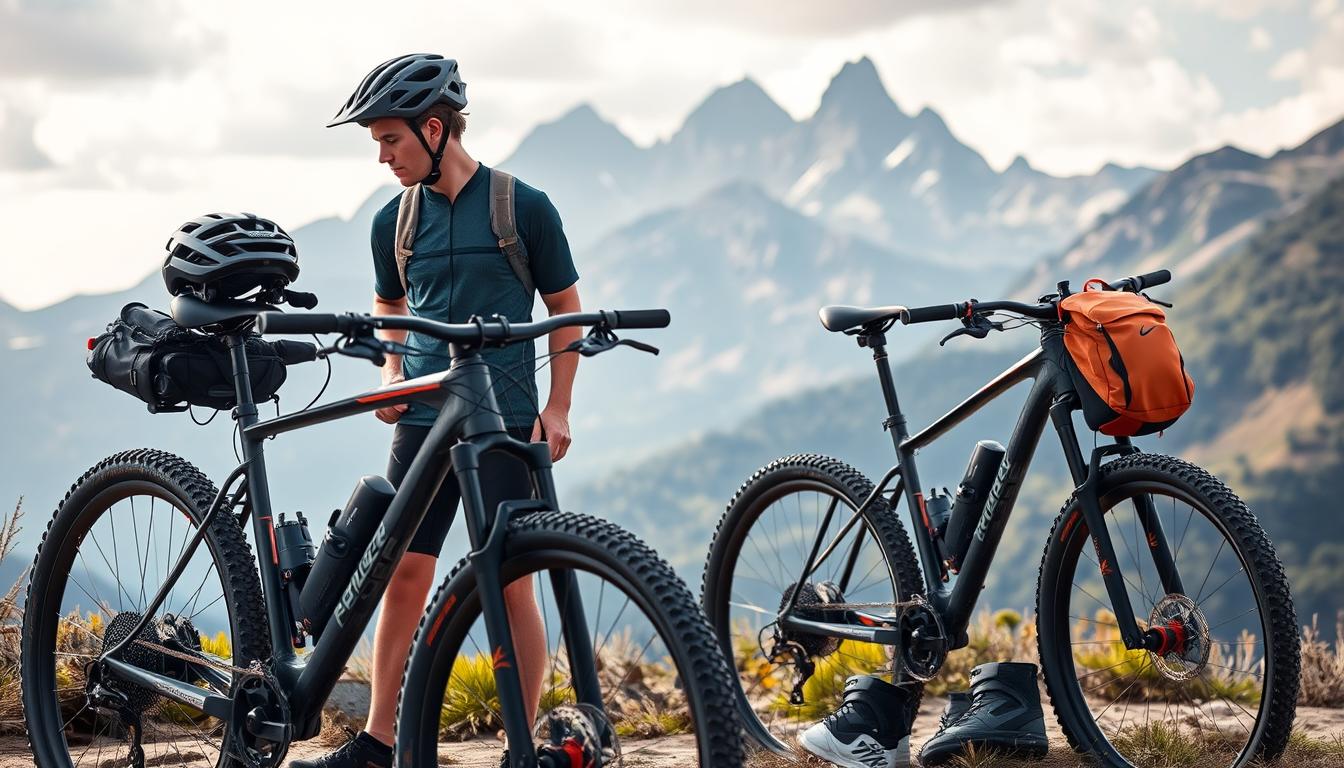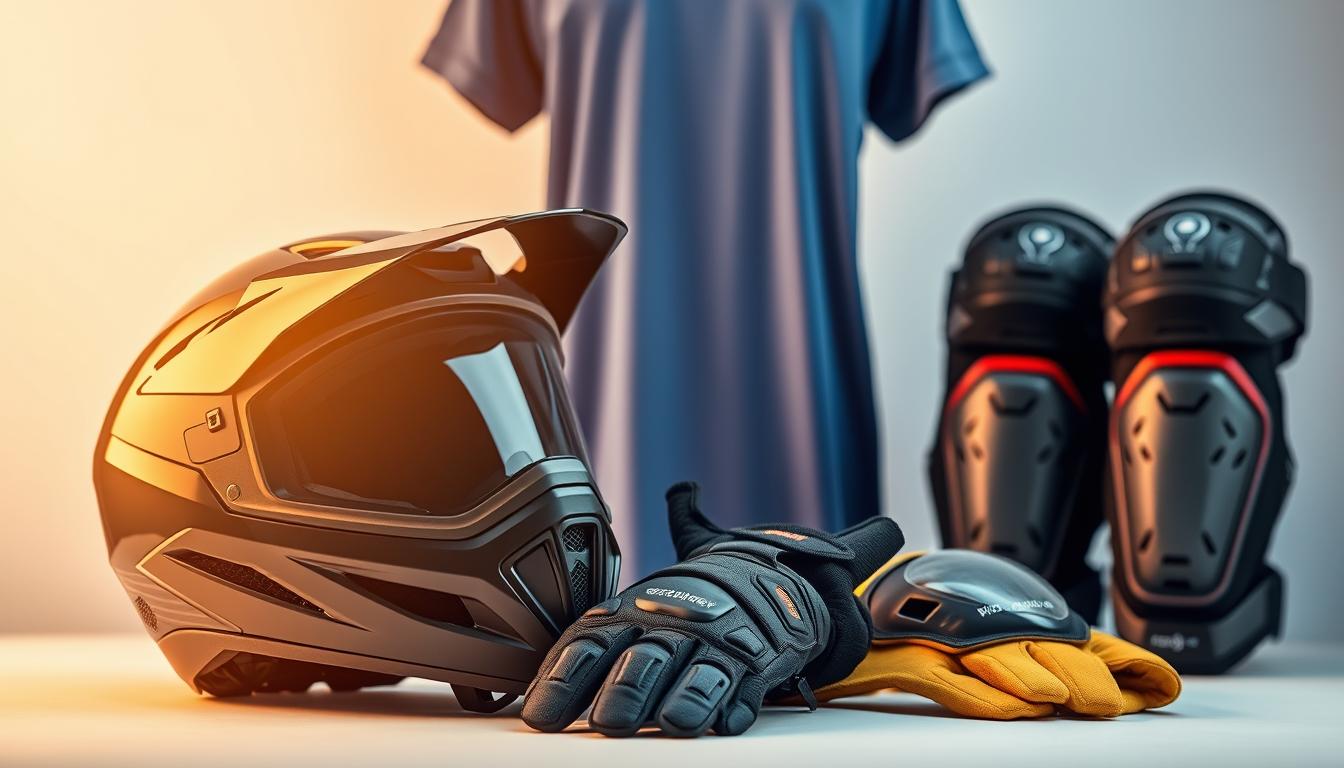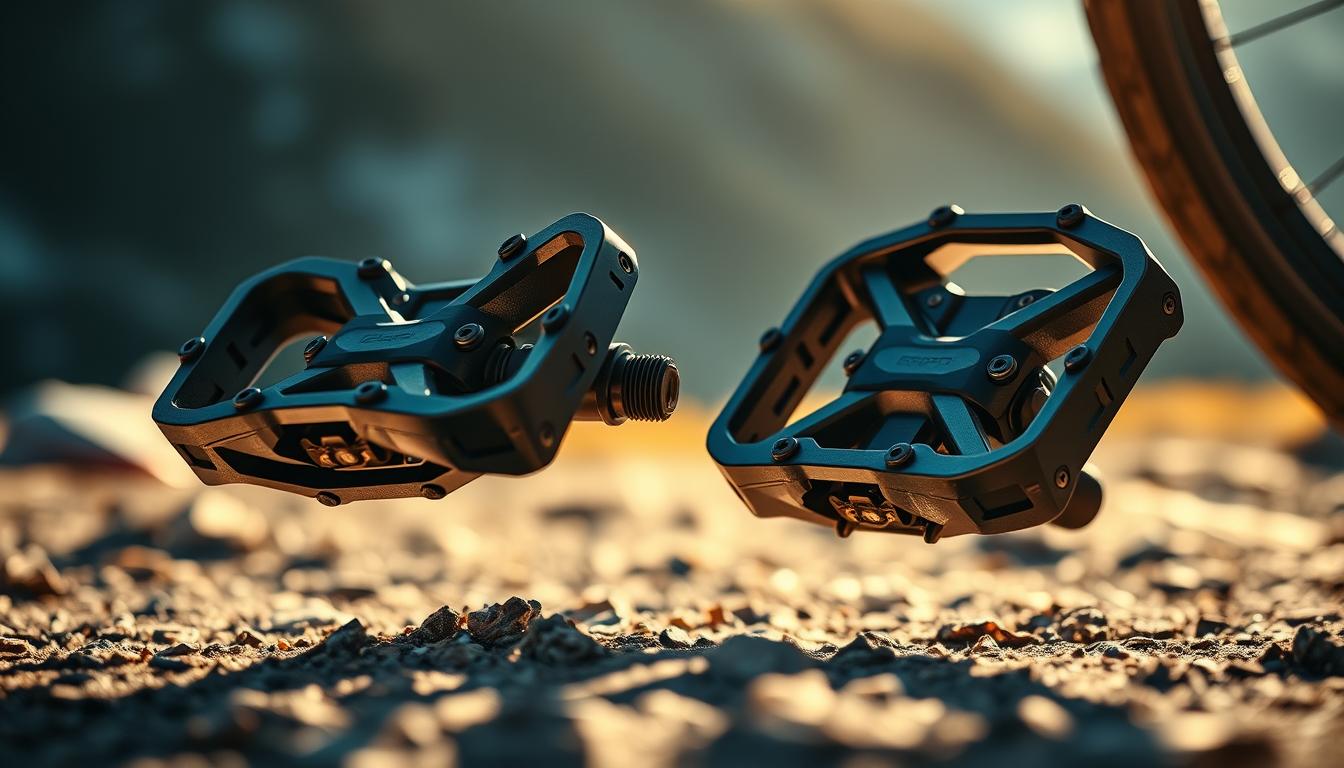By now, it’s clear that e-Bikes are here to stay, revolutionising the way we experience mountain biking. As these ebikes evolve, so do the demands on their suspension systems, particularly for heavier models. This guide is your comprehensive resource for optimising suspension setups on heavier E-Mountain Bikes.
Unlike traditional mountain bikes, ebikes carry additional weight and power, making suspension tuning a more critical task. The goal is to achieve the perfect balance of pressures, spring rates, and rebound settings to unlock your bike’s full potential.
Understanding key terms like sag, spring rate, and damping is essential. These concepts will be explored in detail throughout this guide, drawing on both manufacturer guidelines and real-world tuning tips. Proper suspension setup not only enhances ride quality but also boosts safety, ensuring your bike handles as it should on various terrains.
For instance, the recommended fork SAG setting for heavier E-Mountain Bikes is 20% of total travel, while the rear shock SAG setting is 30%1. These settings ensure optimal performance and control, whether you’re tackling rough trails or climbing steep inclines.
With the right suspension setup, you can enjoy a more comfortable and controlled ride, making every adventure more enjoyable. Let’s dive into the details and get your bike perfectly tuned for your next ride.
Understanding E-Bike Suspension Principles
E-bikes, particularly heavier models, require a tailored approach to suspension setup to ensure optimal performance and rider comfort. Unlike traditional mountain bikes, e-bikes carry additional weight and power, making suspension tuning more critical. The primary goal is to balance pressures, spring rates, and rebound settings to unlock the bike’s full potential.
The Role of Spring Rate and Pressure
A firmer spring rate is necessary for heavier e-bikes to handle the added weight effectively2. This firmness ensures the suspension doesn’t compress too much under load, maintaining control and stability on various terrains. Pressure plays a crucial role in both forks and shocks, directly influencing how the suspension behaves under different conditions.
Setting Sag for Optimal Performance
Sag is the amount the suspension compresses under the rider’s weight. For heavier e-bikes, the recommended fork sag is 20-25% of total travel, while the rear shock sag should be around 30-35%3. These settings ensure the suspension operates within its optimal range, providing a stable ride and preventing issues like excessive dive or wallowing.
| Component | Recommended Sag |
|---|---|
| Fork | 20-25% |
| Rear Shock | 30-35% |
“Proper sag settings are the foundation of a well-tuned suspension system, ensuring both comfort and control on the trails.”
By understanding and applying these principles, riders can achieve a more comfortable and controlled ride, making every adventure more enjoyable. For more detailed guidance on improving handling, visit our expert guide.
E-MTB suspension setups for heavy bikes: Fine-Tuning Your Settings
Fine-tuning your suspension settings is crucial for heavier e-Mountain Bikes to ensure optimal performance and control. Once the basic setup is established, adjusting rebound and compression damping becomes key to handling various terrains effectively.
Adjusting Rebound and Compression Damping
Rebound damping plays a vital role in how quickly the suspension recovers after compression. A well-adjusted rebound setting ensures a smooth ride by preventing the suspension from bouncing back too quickly or too slowly. Compression damping, on the other hand, controls how the suspension compresses under impact. Proper compression damping helps maintain stability, especially during bigger hits, by absorbing shocks effectively.

According to real-world tests, rebound damping should be adjusted in small increments to find the perfect balance. It’s important to test these settings on different terrains to ensure they provide the right amount of control and comfort4.
Managing Additional Weight and Expectation
Heavier bikes require careful consideration of weight distribution and suspension settings. When encountering bigger hits or bumps, the suspension must be able to handle the additional weight without compromising control. This often involves finding a balance between big-hit support and small bump sensitivity.
Achieving the optimal “bike feel” involves tuning the suspension to provide both comfort and control. This balance ensures that the bike remains responsive and stable, regardless of the terrain. By fine-tuning rebound and compression damping, riders can enjoy a more controlled and comfortable riding experience.
Selecting the Right Fork and Rear Suspension Options
Choosing the appropriate fork and rear suspension is vital for heavier e-Mountain Bikes to ensure optimal performance and control. The right components can significantly enhance your riding experience, whether you’re tackling rough trails or climbing steep inclines.
Benefits of Dual Crown Forks for Long Travel
Dual crown forks are highly recommended for long-travel e-Bikes (170mm+), as they offer increased stiffness and improved control during braking and flat landings5. This makes them ideal for handling the additional weight and demands of heavier models.
Coil versus Air Shocks: Which is Best?
Coil shocks are favoured for their superior shock absorption at a lower cost, though they are heavier5. Air shocks, while lighter and offering a smoother ride, require regular pressure checks6. The choice depends on your riding style and terrain.
| Feature | Coil Shocks | Air Shocks |
|---|---|---|
| Weight | Heavier | Lighter |
| Cost | Lower | Higher |
| Maintenance | Less | More |
For instance, the Cannondale Moterra showcases how coil shocks can provide excellent handling on rugged terrains. Consider your specific needs and riding style when making your choice.
“The right fork and rear suspension can transform your bike’s performance, ensuring a smooth and controlled ride on any terrain.”
Integrating Manufacturer Guidelines with Personal Tuning
Combining manufacturer recommendations with personalised adjustments is key to achieving the perfect suspension setup. While manufacturer guidelines provide a solid foundation, tailoring these settings to your specific riding style ensures optimal performance and comfort.
Utilising Shock Pumps and Preload Adjustments
A shock pump is essential for fine-tuning your suspension. It allows precise control over pressure, which directly impacts how your suspension behaves. Preload adjustments, on the other hand, determine how the spring initialises. Together, these tools help you achieve the desired bike feel, ensuring your suspension responds effectively to various terrains7.
For instance, adjusting the rebound adjuster can significantly alter how your suspension recovers after compression. A well-tuned rebound setting ensures a smooth ride, preventing the suspension from bouncing back too quickly or too slowly. This balance is crucial for maintaining control, especially on technical trails8.
Tailouring Suspension Settings to Your Riding Style
Your riding style plays a pivotal role in how your suspension should be set up. Aggressive riders may prefer firmer settings for better stability, while those prioritising comfort might opt for a softer setup. It’s important to test different configurations on familiar trails to find your ideal balance.
Consider consulting manufacturer guidelines as a starting point. For example, Fox recommends specific settings for their shocks based on rider weight and style9. However, don’t hesitate to experiment. The goal is to create a setup that feels natural and responsive to your unique riding preferences.
Remember, a well-tuned suspension system not only enhances performance but also improves safety and riding enjoyment. By blending manufacturer recommendations with personal adjustments, you can unlock your bike’s full potential and enjoy a more controlled and comfortable ride.
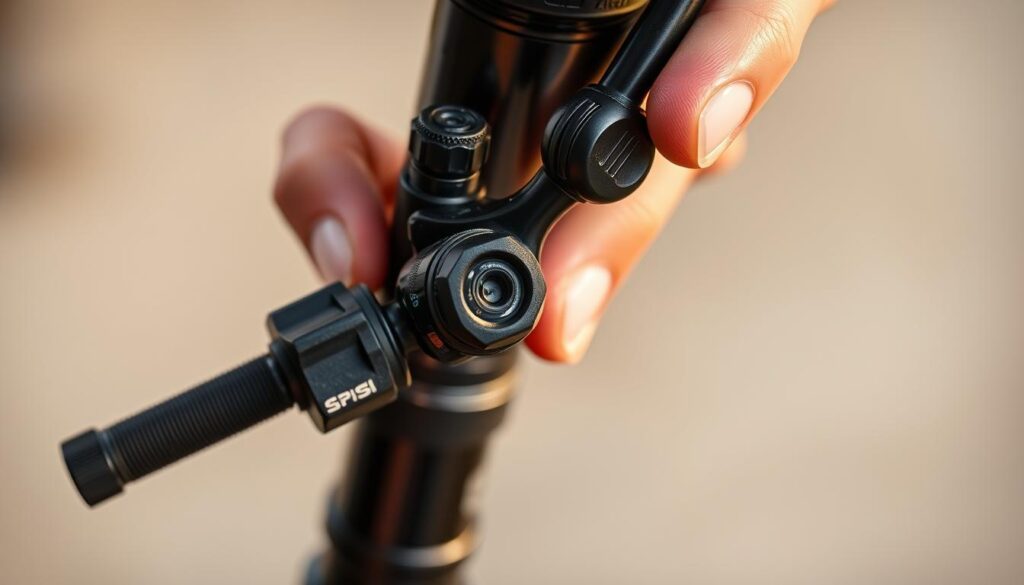
For more detailed settings or to have your bike’s suspension tuned specifically for you, visit our expert guide for comprehensive tips and recommendations.
Conclusion
Setting up the suspension on heavier e-Mountain Bikes requires careful attention to detail to ensure optimal performance and comfort. By following the principles outlined in this guide, riders can achieve a balanced setup that enhances their riding experience. Remember, the key lies in proper spring rates, sag adjustments, and rebound settings to maintain control and stability on various terrains.
Selecting the right fork and rear suspension is equally important. Whether you prefer coil or air shocks, the choice should align with your riding style and the terrain you frequent. For instance, dual crown forks are ideal for long-travel bikes, offering increased stiffness and control10.
Always start with manufacturer guidelines but don’t hesitate to experiment. Fine-tuning your suspension to suit your weight and riding style will make a significant difference. Testing different settings on familiar trails can help you find the perfect balance between comfort and control.
For more insights into suspension systems, consider exploring our guide on dual-suspension vs. hardtail e-bikes. This resource can help you decide which type of bike best fits your needs, whether you’re climbing steep hills or navigating rough trails.
Regular maintenance is crucial for optimal performance. Cleaning, inspecting, and lubricating your suspension components will ensure they function at their best. Remember, a well-maintained suspension system not only enhances ride quality but also improves safety and longevity.
In conclusion, mastering suspension setup is a process that requires patience and practice. By combining manufacturer recommendations with personal adjustments and staying proactive with maintenance, you can unlock your bike’s full potential. Happy trails!
FAQ
Why is suspension setup so important for heavier e-mountain bikes?
Proper suspension setup ensures control, comfort, and performance, especially for heavier bikes. It helps manage weight distribution, absorbs bumps, and maintains traction, which is crucial for stability at high speeds and on technical trails.
How do I set the correct sag on my e-MTB?
Start by wearing your riding gear and positioning the bike on a level surface. Gently sit on the bike and let it settle. The sag should be around 25-30% of the total travel. Adjust the preload or air pressure to achieve this. Use a shock pump for precision.
What’s the difference between coil and air shocks?
Coil shocks are often preferred for their consistent feel and ability to handle high-speed bumps. Air shocks are lighter and offer more adjustability, making them ideal for riders who want to fine-tune their setup based on weight and riding style.
How does rebound damping affect the ride?
Rebound damping controls how quickly the shock or fork returns to its neutral position after a compression. Too slow, and the bike may feel unstable; too fast, and it may feel harsh. Adjust the rebound adjuster to suit your speed and trail conditions.
Can I adjust my suspension to match my riding style?
Absolutely! If you’re a more aggressive rider hitting big drops, you’ll want a firmer setup to handle big hits. For trail riding, a softer setup with more suspension travel can enhance comfort and control. Experiment with compression and rebound damping to find your ideal bike feel.
How does damping affect high-speed performance?
Proper damping ensures the bike remains stable at high speeds, even when encountering rough terrain. It prevents the fork and shock from bottoming out and maintains control, which is essential for fast riding on mountain trails.
Should I follow the manufacturer’s suspension setup guide?
Yes, but don’t stop there. Manufacturer guidelines are a great starting point, but your weight, riding style, and trail conditions may require further adjustments. Use the guide as a foundation and fine-tune from there.
How do I handle bigger hits with my suspension setup?
For bigger hits, ensure your suspension travel is adequate and your damping settings are dialed in. If you’re still experiencing harsh landings, consider increasing the spring rate or adding volume spacers to reduce bottom-out.
What’s the purpose of a shock pump?
A shock pump is used to adjust the air pressure in your air shocks or fork. It ensures precise control over the pressure levels, which is critical for achieving the right sag and performance from your suspension.
Source Links
- How to set the SAG on your E-MTB Suspension in ten Minutes
- The Essential Guide to E-Bike Suspension
- Technical Article, Part # 1: Suspension, The Ups, The Downs, The Hacks
- Setup Guide – How to adjust your mountain bike suspension for optimal performance
- E-Bike Suspension: A Comprehensive Guide to a Smoother Ride
- E-Bike Suspension: What You Should Know Before Choosing Your Bike
- Electric Bike Suspension Frequently Asked Questions (FAQs)
- NSMB.com – Starting Out With Suspension Data Acquisition
- Technical Article, Part # 3: Suspension, The Ups, The Downs, The Hacks
- How Important Is Suspension on an Electric Mountain Bike?
